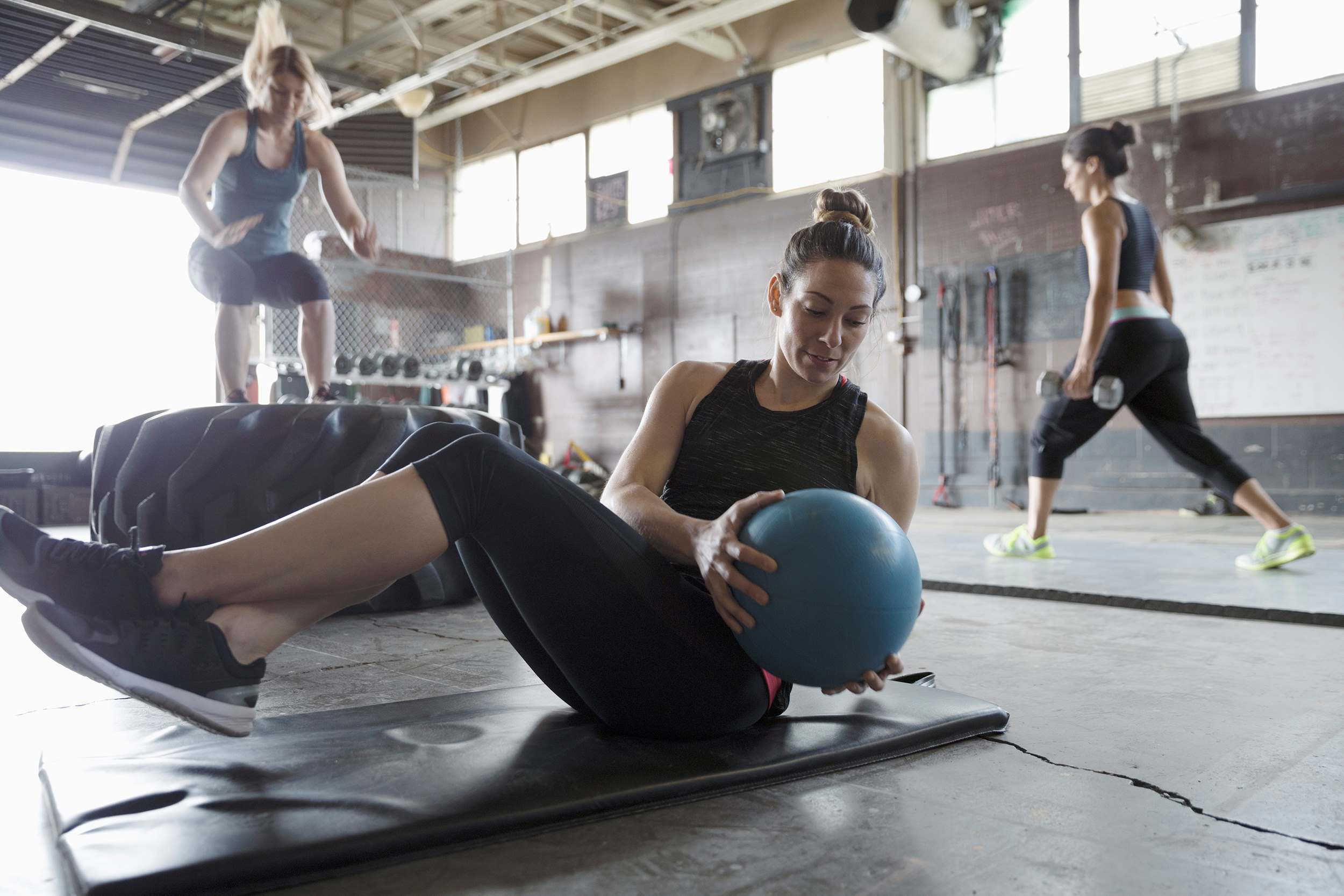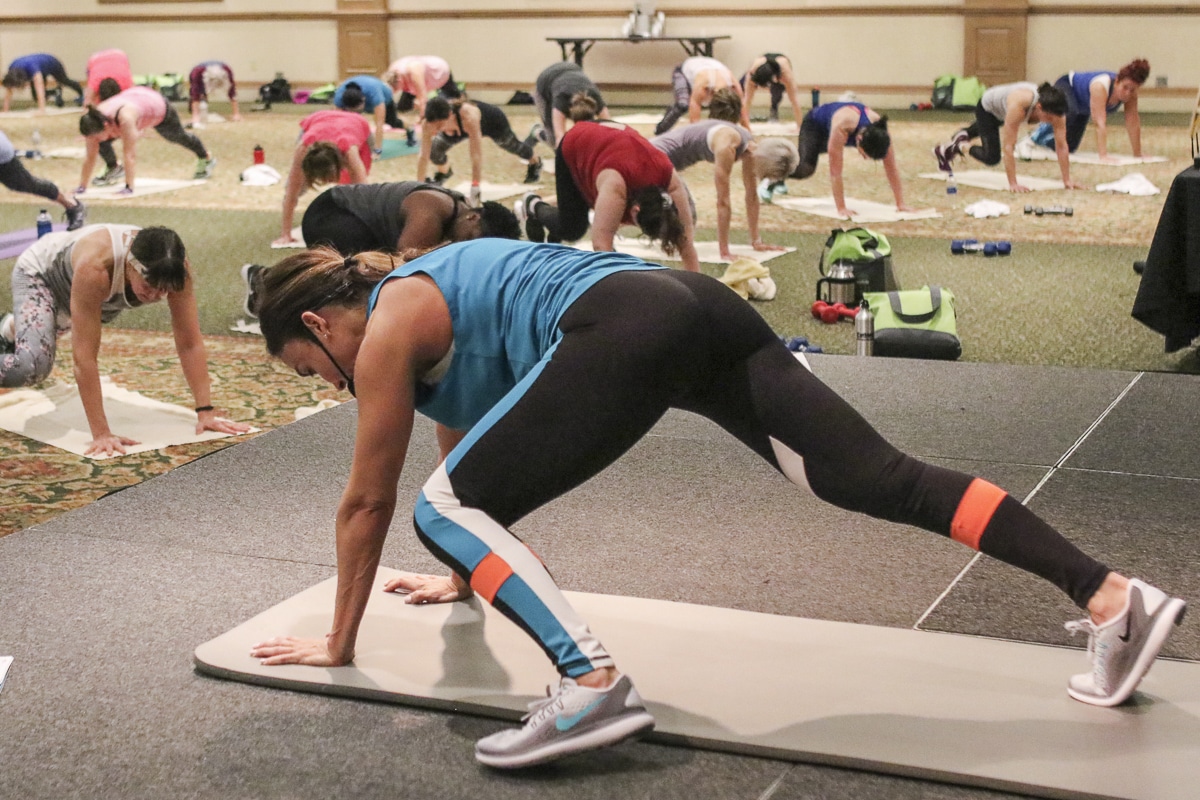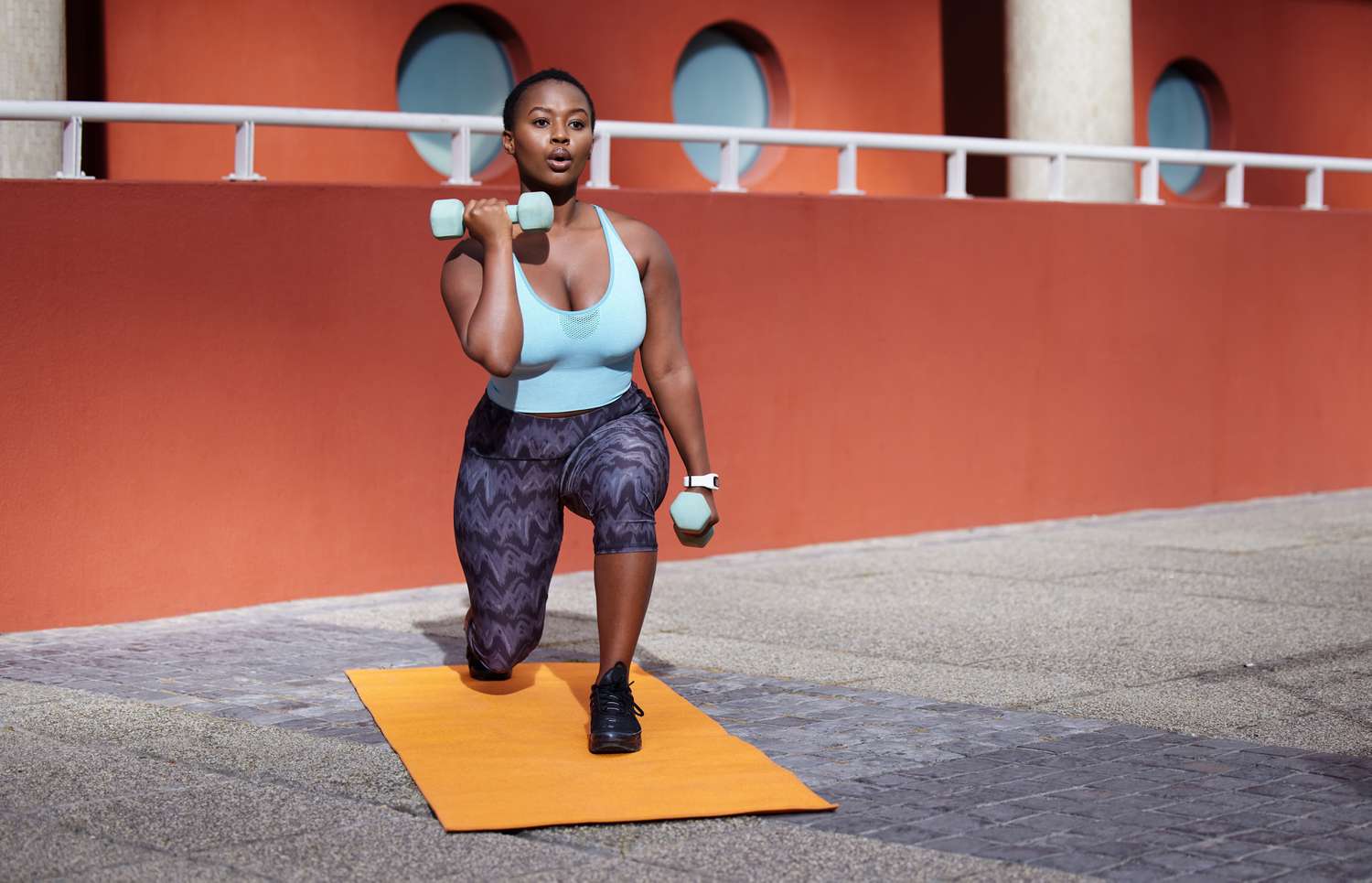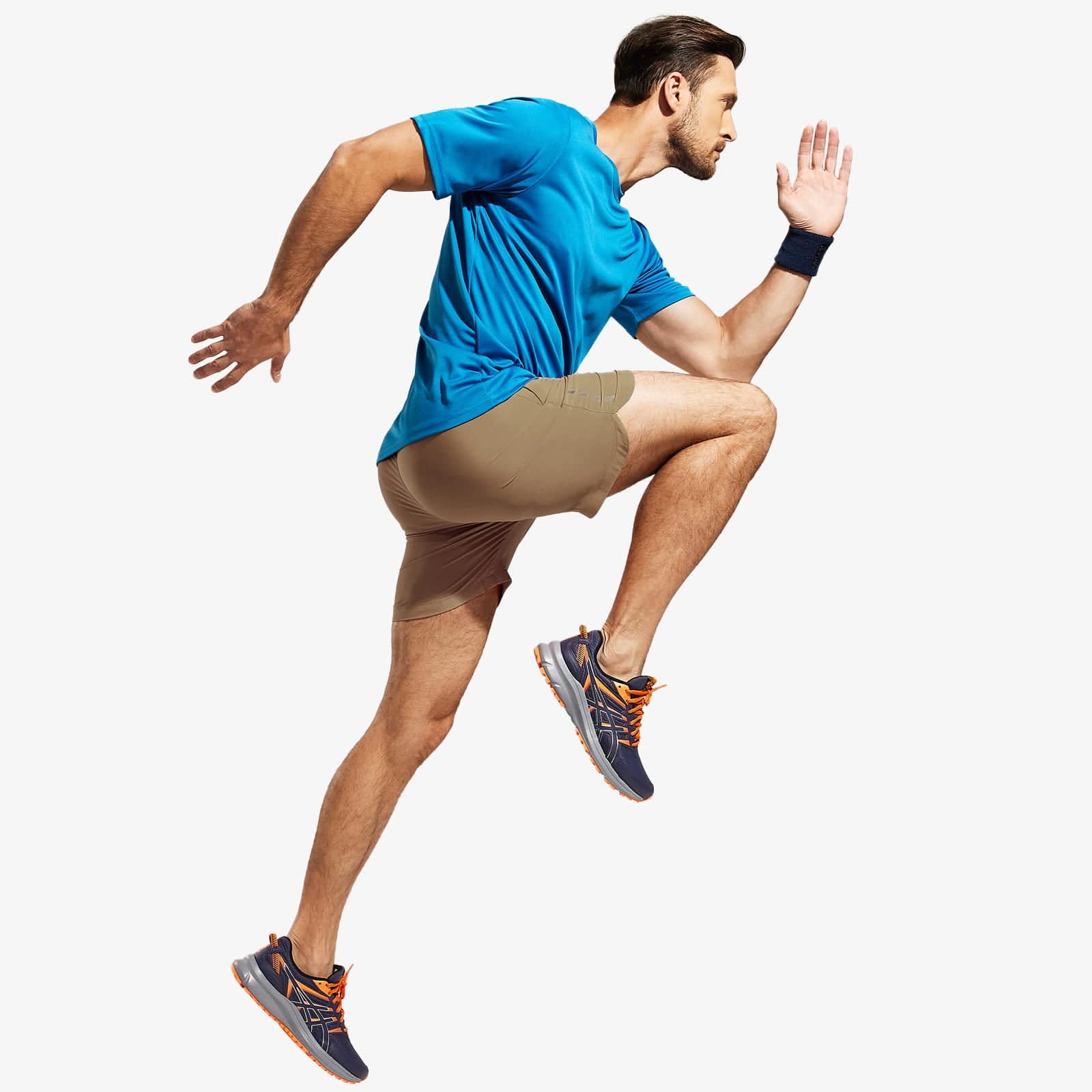

Featured
What Is A CrossFit Workout
Modified: August 21, 2023
Discover what a featured CrossFit workout is and how it can transform your fitness routine. Unleash your full potential with this high-intensity training program.
Introduction
Welcome to the world of CrossFit! If you’re looking for an intense and dynamic workout regimen, then you’ve come to the right place. CrossFit has gained immense popularity in recent years, attracting fitness enthusiasts who are looking for a challenging and comprehensive approach to their workouts. In this article, we will explore what CrossFit is all about, its history, the elements of a CrossFit workout, its benefits, common exercises, how to get started, and safety precautions to keep in mind.
CrossFit is not your typical gym experience. It is a high-intensity fitness program that combines elements of weightlifting, cardiovascular exercise, and bodyweight movements. The aim of CrossFit is to improve overall fitness and build functional strength by pushing the boundaries of your physical abilities.
Founded by Greg Glassman in the early 2000s, CrossFit has quickly gained a dedicated following. The program focuses on constantly varied workouts that challenge different muscle groups and energy systems. Whether you’re a seasoned athlete or a beginner, CrossFit can be tailored to your fitness level, making it accessible to a wide range of individuals.
The core idea behind CrossFit is to develop fitness that is broad, general, and inclusive. Unlike traditional workouts that often focus on specific muscle groups or a singular aspect of fitness, CrossFit aims to develop a well-rounded athlete. The workouts include a combination of strength training, endurance exercises, and gymnastic movements, providing a comprehensive approach to fitness.
One of the most appealing aspects of CrossFit is its community-oriented nature. CrossFit gyms, commonly known as “boxes,” encourage a supportive and motivating environment where members can push themselves to achieve their goals. The sense of camaraderie created by group workouts fosters a sense of belonging and accountability.
Now that we have a general understanding of what CrossFit is, let’s delve deeper into its history and how it has evolved over the years. By understanding the roots of CrossFit, we can gain insight into the methodology and principles that underpin this unique fitness program.
What is CrossFit?
CrossFit is a high-intensity fitness program that combines elements of weightlifting, cardiovascular exercise, and bodyweight movements. It is designed to improve overall fitness and build functional strength by incorporating a wide range of exercises and workouts. Unlike traditional gym workouts that focus on isolated movements or muscle groups, CrossFit aims to develop a well-rounded athlete.
One of the defining features of CrossFit is its emphasis on intensity. Workouts are typically short but intense, pushing participants to their limits and challenging them both physically and mentally. This intensity, combined with constantly varied workouts, ensures that participants never get bored and continuously progress in their fitness journey.
In a typical CrossFit class, participants can expect a combination of strength training, cardiovascular exercise, and bodyweight movements. These workouts often involve functional movements that mimic real-life actions, such as lifting, pushing, pulling, and jumping. By incorporating functional movements, CrossFit aims to improve not only overall strength but also mobility, flexibility, and coordination.
The CrossFit methodology is based on the principle of constantly varied functional movements performed at high intensity. This means that workouts are never the same, keeping participants engaged and preventing plateaus in their fitness progress. The program draws inspiration from various disciplines, such as weightlifting, powerlifting, gymnastics, and cardiovascular training, combining them to create challenging and effective workouts.
Another key aspect of CrossFit is its focus on competition. While participants can certainly engage in friendly competition during workouts, CrossFit is also known for its annual CrossFit Games. This event brings together elite CrossFit athletes from around the world to compete against each other in a series of challenging workouts. The CrossFit Games highlight the incredible physical abilities and dedication of the participants, inspiring others to push their own boundaries.
One of the unique aspects of CrossFit is its community-oriented approach. CrossFit gyms, or “boxes,” encourage a sense of camaraderie and support among members. Workouts are often done in a group setting, allowing participants to cheer each other on and celebrate their achievements together. This community aspect fosters a motivating and inclusive environment that can help individuals stay committed and motivated in their fitness journey.
Now that we have a better understanding of what CrossFit is, let’s dive into the history of this fitness phenomenon and how it has evolved over the years.
The History of CrossFit
The history of CrossFit dates back to the early 2000s when Greg Glassman, a former gymnast and personal trainer, founded the fitness program. Glassman initially developed CrossFit as a training program for police officers and military personnel, aiming to create a well-rounded fitness regimen that would prepare individuals for any physical challenge.
In 2000, Glassman launched CrossFit as a website featuring daily workouts known as WODs (Workout of the Day). The website quickly gained a following as people from various backgrounds and fitness levels started incorporating CrossFit workouts into their training routines. The popularity of the program led to the establishment of CrossFit gyms, or “boxes,” where individuals could receive coaching and participate in group workouts.
Over the years, CrossFit continued to grow in popularity, with more and more individuals embracing the intense and varied workouts. In 2007, the first CrossFit Games were held, bringing together top CrossFit athletes to compete against each other in a series of rigorous workouts. The event gained traction and has since become an annual event showcasing the elite athleticism and dedication of CrossFit athletes.
As CrossFit gained momentum, it garnered both praise and criticism. Supporters applauded its effectiveness in improving strength, stamina, and overall fitness, while critics expressed concerns over the risk of injury due to the high-intensity nature of the workouts. Despite the debates, CrossFit remained steadfast in its mission to provide individuals with a comprehensive approach to fitness.
In recent years, CrossFit has undergone some changes. In 2019, CrossFit Inc. appointed new leadership and introduced a renewed commitment to inclusivity and community. The program emphasized the importance of creating a supportive and welcoming environment for all individuals, regardless of their fitness level, age, or background.
Today, CrossFit has expanded its reach globally, with thousands of CrossFit affiliates around the world. These affiliates follow the CrossFit methodology, offering workouts and coaching to help individuals achieve their fitness goals. CrossFit’s impact extends beyond its physical benefits; it has built a strong sense of community among its participants, fostering relationships and support networks that contribute to the overall experience.
The history of CrossFit is a testament to its transformative power and enduring popularity. From its humble beginnings as a training program for law enforcement and military personnel to becoming a worldwide fitness phenomenon, CrossFit continues to inspire individuals to push their limits and strive for excellence in their fitness journeys.
The Elements of a CrossFit Workout
A CrossFit workout is designed to challenge and improve various aspects of fitness, including strength, endurance, power, speed, agility, and flexibility. The program incorporates a combination of different elements to create well-rounded and dynamic workouts. Let’s take a closer look at the key elements of a CrossFit workout:
1. Constantly Varied:
One of the fundamental principles of CrossFit is the concept of constantly varied workouts. This means that no two workouts are the same. The program incorporates a wide variety of exercises, movements, and equipment to keep participants engaged, prevent boredom, and ensure continuous progress. From Olympic weightlifting to gymnastics, rowing to running, each CrossFit workout brings a new challenge.
2. Functional Movements:
CrossFit places a strong emphasis on functional movements, which are movements that mimic real-life actions. These movements include pushing, pulling, squatting, lifting, and jumping. By incorporating functional movements into workouts, CrossFit aims to improve overall strength, mobility, flexibility, and coordination. Functional movements also have practical applications in daily life, making CrossFit workouts beneficial for everyday activities.
3. High Intensity:
Intensity is a key component of CrossFit workouts. The program encourages participants to push themselves to their limits, performing exercises and movements at a high intensity. This intensity promotes increased heart rate, improved cardiovascular fitness, and the release of endorphins. High-intensity workouts also lead to efficient calorie burn and can help participants achieve their weight loss goals.
4. Time Based:
Many CrossFit workouts are structured around a specific time domain. Participants are given a set amount of time to complete a certain number of rounds or repetitions of exercises. The time-based aspect adds an element of competition and urgency, challenging participants to work as hard and as efficiently as possible within the given timeframe.
5. Repetition and Sets:
CrossFit workouts often involve performing a certain number of repetitions and sets of exercises. This repetition and set structure allows participants to track their progress and measure improvements over time. Additionally, it adds structure and a sense of accomplishment as participants strive to complete each set and repetition with proper form and technique.
6. Work Capacity:
Another key element of CrossFit is the focus on work capacity, which refers to the ability to perform physical work over an extended period of time. CrossFit workouts are designed to increase work capacity by combining cardiovascular exercises with strength training and conditioning. The goal is to build not only strength and power but also the ability to maintain sustained effort and performance.
By incorporating these elements into each workout, CrossFit aims to improve overall fitness, challenge participants, and create a dynamic and engaging training experience. Now that we understand the elements of a CrossFit workout, let’s explore the numerous benefits that come with this unique fitness program.
The Benefits of CrossFit
CrossFit offers numerous benefits that contribute to overall health and fitness. Whether you’re a beginner or an advanced athlete, incorporating CrossFit into your workout routine can have a transformative impact on your physical and mental well-being. Let’s explore some of the key benefits of CrossFit:
1. Improved Strength and Endurance:
One of the primary benefits of CrossFit is improved strength and endurance. The program involves a combination of weightlifting, bodyweight exercises, and cardiovascular workouts, all of which contribute to building functional strength and increasing endurance. The varied nature of CrossFit workouts ensures that different muscle groups are targeted consistently, resulting in overall strength gains.
2. Increased Cardiovascular Fitness:
CrossFit workouts are designed to improve cardiovascular fitness by incorporating high-intensity movements and exercises. The combination of strength training and cardiovascular conditioning helps to elevate heart rate, improve lung capacity, and enhance overall cardiovascular endurance. Regular participation in CrossFit can lead to improved cardiovascular health and increased stamina.
3. Enhanced Flexibility and Mobility:
Many CrossFit exercises and movements require a wide range of motion, which helps to improve flexibility and mobility. The functional movements performed in CrossFit workouts contribute to increased joint mobility, better posture, and improved overall flexibility. This can also help to prevent injuries and enhance athletic performance in other sports or activities.
4. Weight Loss and Body Composition:
CrossFit workouts are highly effective for weight loss and improving body composition. The combination of high-intensity exercises, strength training, and metabolic conditioning can lead to efficient calorie burn and increased fat loss. Additionally, building lean muscle mass through CrossFit workouts can help to boost metabolism and promote long-term weight management.
5. Improved Mental Resilience:
Participating in CrossFit workouts can have a positive impact on mental resilience and mindset. The intensity of CrossFit workouts pushes individuals to their limits, helping them develop mental strength, discipline, and perseverance. Overcoming challenges and achieving personal goals in the CrossFit environment can boost confidence and foster a resilient mindset that extends beyond the gym.
6. Camaraderie and Community:
CrossFit gyms foster a supportive and motivating environment that encourages camaraderie and community. Workouts are often done in a group setting, allowing participants to cheer each other on, provide support, and celebrate achievements together. This sense of community can enhance motivation, accountability, and overall enjoyment of the fitness journey.
These are just a few of the many benefits that CrossFit offers. From physical improvements to mental resilience and community support, CrossFit has the potential to transform not only your fitness but also your overall well-being. Now that we’ve explored the benefits, let’s take a look at some common CrossFit exercises that you can expect to encounter in a typical workout.
Common CrossFit Exercises
CrossFit incorporates a wide range of exercises and movements to target different muscle groups and improve overall fitness. These exercises are designed to be functional, challenging, and adaptable to different fitness levels. Here are some common CrossFit exercises that you can expect to encounter in a typical workout:
1. Olympic Lifts:
Olympic lifts, such as the clean and jerk and snatch, are dynamic and explosive weightlifting movements. These exercises involve lifting a loaded barbell from the floor to an overhead position, requiring a combination of strength, power, and technique. Olympic lifts are often included in CrossFit workouts to develop full-body strength and power.
2. Bodyweight Movements:
Bodyweight movements, such as push-ups, pull-ups, squats, and burpees, are fundamental in CrossFit workouts. These exercises require no equipment and utilize the body’s own weight for resistance. Bodyweight movements are effective for improving strength, endurance, and overall body control.
3. Kettlebell Swings:
Kettlebell swings are dynamic exercises that target the posterior chain, including the glutes, hamstrings, and lower back. By swinging a kettlebell from between the legs to shoulder height, this exercise improves hip power, explosiveness, and grip strength. Kettlebell swings are often performed for high repetitions to challenge muscular endurance.
4. Box Jumps:
Box jumps are plyometric exercises that involve jumping onto a box or platform from a standing position. This exercise improves lower body power, explosive strength, and coordination. Box jumps can be modified based on individual fitness levels by adjusting the height of the box.
5. Rowing:
The rowing machine, or ergometer, is a popular piece of equipment used in CrossFit workouts. Rowing is a full-body exercise that improves cardiovascular endurance, upper and lower body strength, and power. Workouts often include rowing intervals or distances to challenge different energy systems.
6. Wall Balls:
Wall balls combine a squat movement with a medicine ball throw. Participants start with a squat, then explosively throw the medicine ball against a wall by extending the hips and arms. This exercise targets the lower body, upper body, and core muscles, improving strength, power, and coordination.
These are just a few examples of the many exercises you can expect to encounter in CrossFit workouts. What makes CrossFit unique is its ability to constantly vary the exercises, allowing for endless combinations and opportunities for progress. The wide range of movements challenges different muscle groups and energy systems, ensuring a well-rounded and dynamic fitness experience.
How to Get Started with CrossFit
Getting started with CrossFit is an exciting endeavor that can have a significant impact on your fitness journey. Whether you’re a beginner or an experienced athlete, here are some steps to help you get started with CrossFit:
1. Research and Find a Reputable CrossFit Affiliate:
Before diving into CrossFit, take the time to research and find a reputable CrossFit affiliate, also known as a “box.” Look for a box that aligns with your goals, values, and desired atmosphere. Read reviews, visit their website, and reach out to the box to gather more information about their coaching staff, class schedule, and community.
2. Schedule an Introductory Session:
Once you’ve found a box that interests you, schedule an introductory session or consultation. Many CrossFit affiliates offer introductory sessions where you can tour the facility, meet the coaches, and discuss your fitness goals. This is an opportunity to ask questions, share any concerns, and get a feel for the box’s coaching style and community.
3. Start with Fundamentals Classes:
Most CrossFit boxes offer fundamentals classes specifically designed for newcomers. These classes focus on teaching the foundational movements and techniques used in CrossFit workouts. Starting with fundamentals classes allows you to learn proper form, build a solid foundation, and gradually increase the intensity of your workouts.
4. Listen to Your Coaches:
When starting CrossFit, it’s important to listen to and trust the guidance of your coaches. They are there to help you progress safely and effectively. Pay attention to their instructions, ask for feedback, and make adjustments based on their advice. Coaches can provide valuable insights and ensure that you perform exercises with proper form and technique.
5. Scale and Modify Workouts as Needed:
CrossFit workouts can be scaled and modified to suit your fitness level and abilities. Don’t be afraid to scale down weights, modify movements, or adjust the number of repetitions to match your current capabilities. As you progress and gain strength, you can gradually increase the intensity and challenge yourself with more advanced exercises.
6. Embrace the Community:
One of the unique aspects of CrossFit is its strong sense of community. Embrace this aspect and connect with fellow CrossFit enthusiasts. Engage in conversations, support and motivate each other, and celebrate each other’s achievements. The CrossFit community can provide a network of like-minded individuals who will inspire and encourage you throughout your fitness journey.
7. Prioritize Recovery and Rest:
CrossFit workouts can be intense, so it’s crucial to prioritize recovery and rest. Allow your body time to recover between workouts and listen to your body’s signals. This includes getting enough sleep, hydrating properly, and incorporating foam rolling, stretching, and mobility work into your routine. Taking care of your body will help prevent injuries and optimize your performance.
By following these steps, you can embark on your CrossFit journey with confidence and set yourself up for success. Remember, CrossFit is a personal journey, and progress comes with consistency and dedication. Now that you have an understanding of how to get started, let’s compare CrossFit to traditional workouts and explore their differences.
CrossFit vs. Traditional Workouts
When it comes to choosing a fitness routine, you may find yourself deciding between CrossFit and traditional workouts. Both approaches have their merits, and understanding their differences can help you make an informed decision. Let’s compare CrossFit and traditional workouts in various aspects:
1. Programming:
One of the key differences between CrossFit and traditional workouts is the programming. CrossFit workouts follow a constantly varied approach, incorporating a wide range of exercises and movements. Traditional workouts, on the other hand, often involve specific routines targeting specific muscle groups or fitness goals. CrossFit’s varied programming ensures that workouts are always challenging and prevents plateaus in fitness progress.
2. Structure:
In terms of structure, traditional workouts typically follow a set routine with specific exercises and rep ranges. CrossFit workouts, on the other hand, are often time-based or task-based, requiring participants to complete a certain number of rounds or reps within a given timeframe. This structure adds an element of competition and urgency to CrossFit workouts, pushing participants to work as efficiently as possible.
3. Equipment and Facilities:
Traditional workouts often take place in traditional gym settings, with various machines, free weights, and cardio equipment. CrossFit workouts, on the other hand, may utilize specialized equipment such as barbells, kettlebells, medicine balls, and gymnastics apparatus. CrossFit boxes are specifically designed for CrossFit workouts and typically have an open-floor layout with minimal equipment.
4. Focus on Functional Movements:
CrossFit places a strong emphasis on functional movements that mimic real-life actions. Traditional workouts, on the other hand, may involve exercises that isolate specific muscle groups. CrossFit’s focus on functional movements improves overall strength, mobility, flexibility, and coordination, which can have practical applications in daily life activities.
5. Community and Support:
CrossFit has a strong sense of community and camaraderie. Workouts are often done in a group setting, encouraging participants to support and motivate each other. The community aspect of CrossFit can create a sense of accountability and provide additional support throughout the fitness journey. Traditional workouts usually involve individual training, with less interaction and camaraderie among participants.
6. Intensity and Scalability:
CrossFit workouts are known for their intensity, pushing participants to their limits. Traditional workouts may vary in intensity depending on individual preferences and training goals. CrossFit workouts can be scaled and modified to accommodate different fitness levels, making it accessible to beginners and advanced athletes alike. Traditional workouts may also offer scaling options, but the scalability is usually more implicit.
These are just a few aspects to consider when comparing CrossFit and traditional workouts. It’s important to evaluate your own fitness goals, preferences, and needs before making your decision. Ultimately, the choice between CrossFit and traditional workouts depends on what motivates and inspires you to stay committed to your fitness journey.
Tips for a Successful CrossFit Workout
CrossFit workouts are challenging and rewarding, providing an intense and dynamic fitness experience. To make the most of your CrossFit workouts and achieve your fitness goals, here are some tips for success:
1. Set Clear Goals:
Before each workout, set clear and achievable goals. These goals can be as simple as completing a certain number of reps or beating your previous time. Setting goals helps to keep you focused and motivated throughout the workout.
2. Warm Up Properly:
A proper warm-up is crucial before any intense workout. Spend 10-15 minutes engaging in dynamic movements to increase your heart rate and warm up your muscles. This can include jogging, jumping jacks, lunges, and arm swings.
3. Focus on Technique:
Technique and form should take precedence over speed and intensity. It’s essential to master the proper technique for each exercise before attempting to increase the intensity. Working with a coach or trainer can help ensure you are using correct form and prevent injuries.
4. Listen to Your Body:
Pay attention to your body’s signals and adjust the workout intensity accordingly. CrossFit workouts are intense, but it’s important to know your limits and avoid pushing yourself too far. Rest when needed, and prioritize recovery to prevent overtraining and injuries.
5. Stay Hydrated and Fuel Properly:
Proper hydration and nutrition play a significant role in maximizing your performance during CrossFit workouts. Drink water before, during, and after the workout to stay hydrated. Fuel your body with nutritious foods that provide energy and support muscle recovery.
6. Embrace the Challenge:
CrossFit workouts are designed to challenge you both physically and mentally. Embrace the discomfort and push through the tough moments. Remember that growth occurs outside of your comfort zone and that each challenge you overcome makes you stronger.
7. Celebrate Progress, Big or Small:
Recognize and celebrate your progress, no matter how small or big. Every improvement, whether it’s an increase in weight or an improvement in your time, is an accomplishment. Acknowledging your progress will keep you motivated and inspired to continue pushing forward.
8. Embrace the Community:
The CrossFit community is incredibly supportive and encouraging. Embrace the community by connecting with like-minded individuals, participating in group workouts, and cheering on your fellow athletes. The camaraderie and support can provide an extra boost of motivation during your CrossFit journey.
By implementing these tips, you can optimize your CrossFit workouts and strive towards your fitness goals. Remember to listen to your body, prioritize proper form, and celebrate every step of your progress.
Safety Precautions in CrossFit
While CrossFit can be an exhilarating and effective fitness program, it’s crucial to prioritize safety to prevent injuries. Here are some important safety precautions to keep in mind when participating in CrossFit workouts:
1. Warm-Up and Stretch:
Always start your CrossFit workouts with a proper warm-up routine. Engage in dynamic movements to increase your heart rate and warm up your muscles. Additionally, incorporate stretching exercises to improve flexibility and prevent muscle strains. Warming up prepares your body for the intense workout ahead and reduces the risk of injury.
2. Focus on Proper Technique:
Proper technique is paramount in CrossFit workouts. Before attempting to increase the intensity, ensure you have a solid foundation of correct form in each exercise. Work with a coach or trainer who can provide guidance and corrections to prevent injuries caused by incorrect movements or posture.
3. Start Slowly and Progress Gradually:
If you’re new to CrossFit, it’s important to start slowly and progress gradually. Allow your body time to adapt to the demands of the workouts. Begin with lighter weights and shorter durations, gradually increasing the intensity and volume as your fitness level improves.
4. Scale and Modify Workouts as Needed:
Each individual has different fitness levels and abilities. CrossFit workouts can be scaled or modified to accommodate your capabilities. Don’t hesitate to decrease weights, adjust rep ranges, or modify movements to match your current fitness level. It’s better to maintain proper form and technique rather than sacrificing it for the sake of intensity.
5. Listen to Your Body:
Tuning into your body’s signals is crucial for injury prevention. If you feel pain or discomfort during a workout, stop and consult with a coach or trainer. Pushing through pain can lead to injuries and setbacks. Rest when needed and prioritize recovery to allow your body to heal and rebuild.
6. Use Proper Equipment:
Correct and well-maintained equipment is essential in CrossFit workouts. Ensure that you are using proper equipment for each exercise and that it is in good condition. Inspect equipment regularly for any signs of wear or damage. Using faulty or improper equipment can increase the risk of accidents and injuries.
7. Stay Hydrated and Take Breaks:
Hydration is crucial during CrossFit workouts. Drink water before, during, and after the workout to stay hydrated and maintain optimal performance. Additionally, listen to your body’s need for breaks. Take short rest intervals between sets or exercises to give your body time to recover and prevent overexertion.
8. Communicate and Seek Professional Guidance:
Openly communicate with your coach or trainer about any concerns or limitations you may have. They can provide modifications, exercises, or alternative movements that suit your needs. Additionally, if you have any pre-existing medical conditions or injuries, consult with a healthcare professional before starting CrossFit.
By following these safety precautions, you can minimize the risk of injuries and enjoy a safe and effective CrossFit workout experience. Remember that safety should always be a top priority and that taking care of your body will allow you to continue progressing towards your fitness goals.
Conclusion
CrossFit offers a unique and exhilarating approach to fitness that caters to individuals seeking a challenging and dynamic workout regimen. By incorporating elements such as constantly varied workouts, functional movements, and high intensity, CrossFit provides a comprehensive path towards improved strength, endurance, flexibility, and overall physical fitness.
Throughout this article, we have explored various aspects of CrossFit, including its definition, history, elements, benefits, and safety precautions. We have learned about the diverse range of exercises commonly found in CrossFit workouts and how to get started on your CrossFit journey. From the community-oriented atmosphere to the scalability of workouts, CrossFit offers a versatile and inclusive fitness experience.
It is important to remember that safety should always be a priority in CrossFit. Proper warm-up and stretching, focusing on technique, scaling workouts, and listening to your body are essential to prevent injuries and ensure a successful fitness journey. CrossFit is an individualized program that can be adapted to suit your fitness level and goals, allowing for growth and progress over time.
Whether you’re a beginner or an experienced athlete, CrossFit has the potential to elevate your fitness routine and challenge you both physically and mentally. The constantly varied workouts, functional movements, supportive community, and emphasis on personal growth make CrossFit an engaging and fulfilling fitness program.
Now that you have a comprehensive understanding of CrossFit, its benefits, and how to get started, it’s time to take the next step. Consider finding a reputable CrossFit affiliate that aligns with your fitness goals, schedule an introductory session, and embrace the CrossFit community as you embark on this exciting fitness journey.
Remember, CrossFit is not just about the physical transformation; it’s about the mental resilience, camaraderie, and personal growth that come with pushing your boundaries. Push yourself, celebrate your progress, and enjoy the transformative power of CrossFit as you pursue a healthier and fitter lifestyle.









